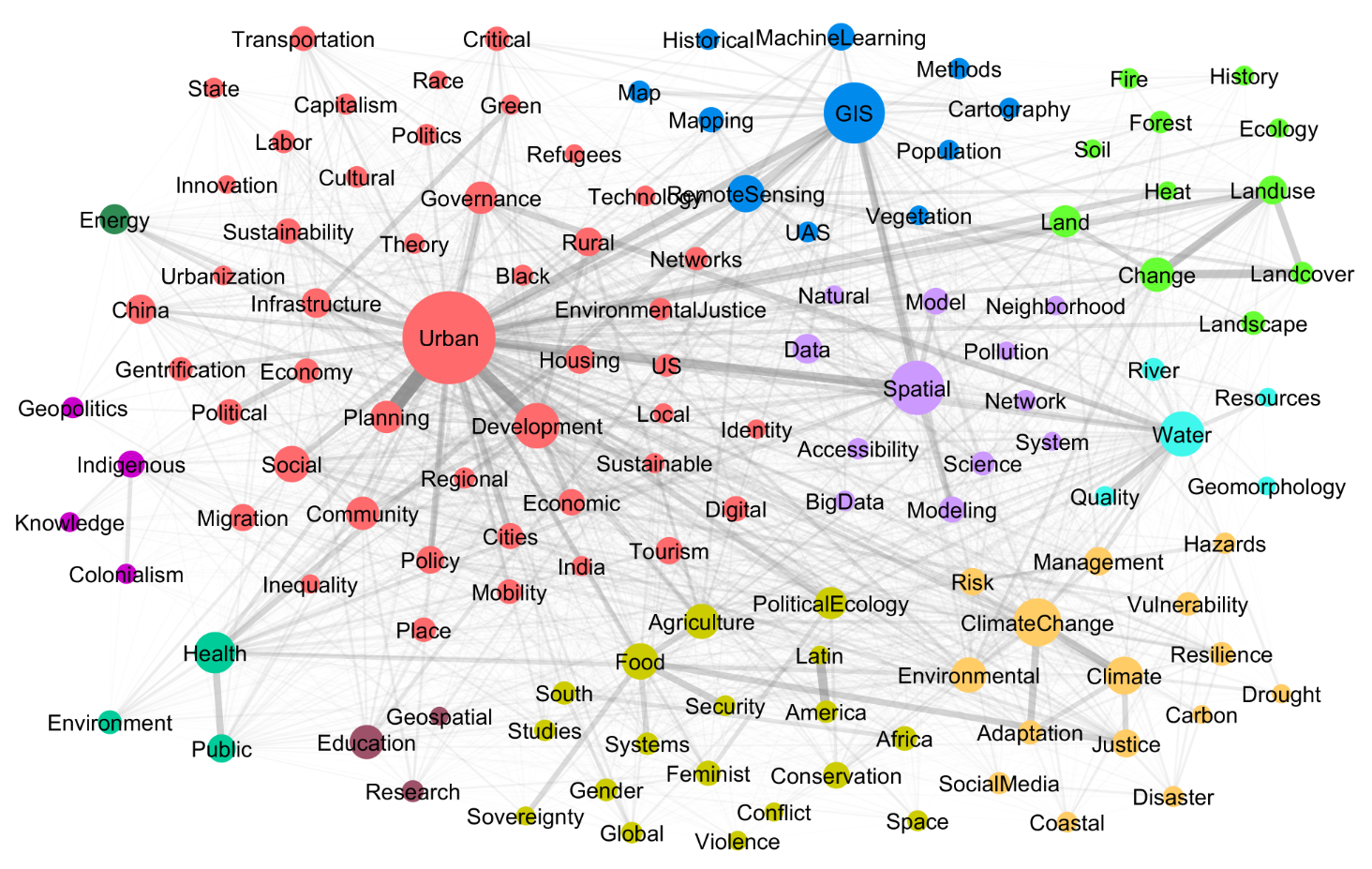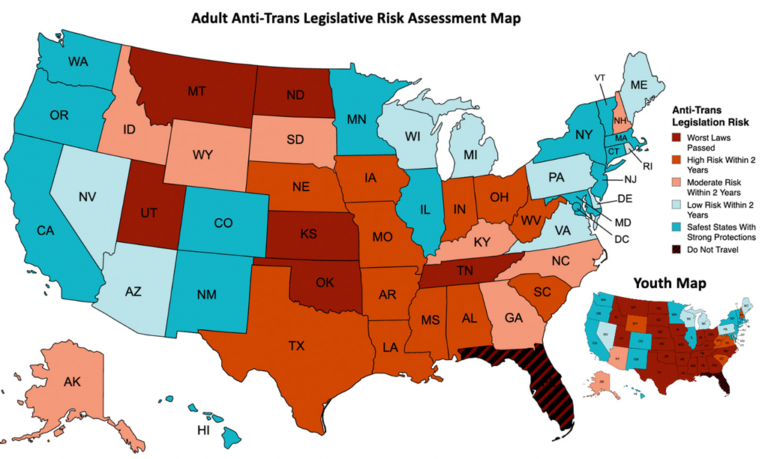What will be Presented at the 2020 AAG Meeting?
Jeong Chang Seong, Chul Sue Hwang, Ana Stanescue, Yubin Lee, and Youngho Lee
A total of 4,893 papers and posters are scheduled to be presented at the Denver AAG Annual Meeting in April this year (numbers as of February 2, 2020). In order to help meeting participants and fellow geographers to sketch out what is going to be presented at the meeting, we summarized the AAG 2020 presentation submissions using keywords network analysis methods.
We collected all keywords from the presentation submissions. They were preprocessed with deletion, concatenation, standardization, normalization, and conversion techniques. A total of 21,954 keywords were split into single-word keywords. Any duplicate words in each record were also deleted. A total of 6,521 unique keywords were identified. We used 40 as the keyword frequency threshold for network visualization. As a result, a keywords network diagram was constructed with 129 keywords as shown in Figure 1. In the figure, circle sizes reflect keyword frequencies, edge widths indicate co-occurrences between two keywords, and circle colors indicate cluster memberships.

Urban (532) was identified as the most frequent keyword at the 2020 AAG Annual Meeting, followed by GIS (322), Spatial (276), Climate Change (234), Development (218), Water (215), Health (191), Climate (168), Remote Sensing (164), Social (158), and Food (158). Each number in parentheses indicates the frequency of the keyword.
When a keywords network clustering algorithm was applied, keywords were grouped into 12 topical clusters as shown in Table 1. The Urban cluster had the largest number (1522) of keywords as members. When the influence of each cluster was measured with the eigenvector centrality, the Urban cluster was also most influential by taking 28.12% of all possible connections among keywords. When only the Urban papers were analyzed, eleven Urban sub-clusters were identified, and their percent influences and member keyword counts are shown in Table 2. No particular topic stands out in the Urban research. Rather, several topics are very competitive.


Some other interesting watch points are also found in the AAG 2020 presentation submissions. Firstly, this year’s 4,893 presentations are significantly less than last year’s 6,026 presentations. Secondly, the Spatial Data Science theme is independent of the GIS theme. It appears to be a much more influential cluster than GIS. Thirdly, the Urban cluster doesn’t seem to be a proprietary estate for traditional urban geographers. It embraces various expertise like GIS, data science and modeling, land use and landcover, water, ecology, and environmental health. Indeed, Urban is rather a solid entity calling diverse geographers. Finally, it will be interesting to see what will happen to the Health, Water, Education, Geopolitics, and Ontology clusters. Will they keep tenures at the AAG 2021 Meeting at Seattle?
Acknowledgment: This research was supported by the MSIT (Ministry of Science, ICT), Republic of Korea, under the High-Potential Individuals Global Training Program (IITP-2019-0-01603) supervised by the IITP (Institute for Information & Communications Technology Planning & Evaluation). We also thank AAG for supporting data for this research, and thank Dr. Coline Dony, AAG Senior Geography Researcher, for encouraging us to submit this article to the AAG Newsletter.
DOI: 10.14433/2017.0068
About the Authors
Jeong Chang Seong, Ph. D., is a professor of geography at University of West Georgia (UWG), Carrollton, GA
Chul Sue Hwang, Ph. D., is a professor of geography at Kyung Hee University (KHU), Seoul, South Korea
Ana Stanescu, Ph. D., is an assistant professor of computer science at University of West Georgia, Carrollton, GA
Yubin Lee is a graduate student at KHU who is currently performing a visiting research at UWG
Youngho Lee is a graduate student at KHU who is currently performing a visiting research at UWG

